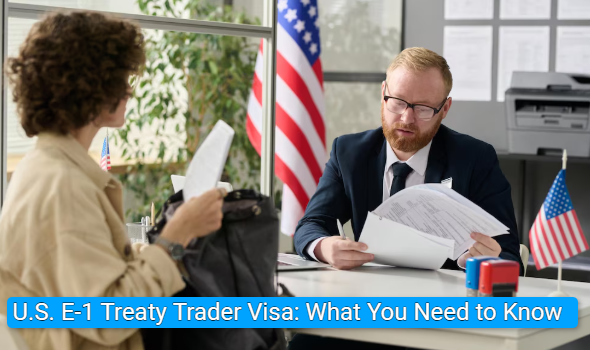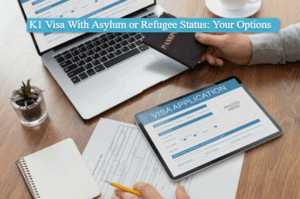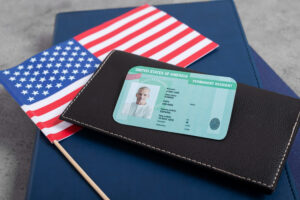Unlock Your U.S. Business Potential through Use of the E-1 Treaty Trader Visa
The U.S. E-1 Visa is an amazing immigration-eligible visa that enables foreign nationals to conduct significant global commerce with their native country and the U.S. It is particularly gratifying for business staff and owners working with firms that are located in treaty countries. Understanding the E-1 visa requirements and how to apply can help you make the best choices about your eligibility and the benefits offered. Below, we will cover all you need to know about the E-1 visa USA, from its definition to how to convert from an E-1 visa to a Green Card.
What is the E-1 Visa?

E-1 Visa is a visa awarded to individuals and employees seeking substantial trade from their native country to the USA. Also known as the treaty trader visa, its purpose is to increase commerce from the U.S. to the foreign countries with which it has entered commerce and navigation treaties.
Eligibility for the E-1 Visa
It is best to be aware of the E-1 visa requirements before starting the application process. The requirements vary depending on the applicant’s nationality and the type of trade carried out, but in general, the following holds:
Nationalities of Treaty Countries:
To qualify for the E-1 Visa, applicants must be nationals of a country with which the U.S. has a treaty of commerce and navigation. More than 80 countries have treaties with the U.S. and thus are qualified to apply for an E-1 visa. These countries are termed E-1 visa countries.
Substantial Trade:
Candidates must show that they are involved in significant international commerce between the U.S. and their treaty nation. Significant trade is generally measured by the number of transactions, with the anticipation that at least 50% of the trade engaged in is between the U.S. and the treaty nation.
Ownership or Key Role in the Business:
Businessmen/women, managers, or experts possessing special skill sets may apply for the visa. The applicant is required to continue trade business operations with a controlling percentage of interest in or as a critical participant within the business entity.
Types of Trade:
A trade involving goods, services, technology, or other goods or commodities that benefit both the U.S. and the treaty nation.
Step-by-Step Guide to Obtaining the E-1 Visa

If you meet the E-1 visa requirements, it’s time to start applying. The process consists of several major steps:
Complete the DS-160 Form:
All E-1 applicants must complete the DS-160, which is the official non-immigrant visa application form.
Collect Documentation:
Alongside the DS-160, you will need to provide:
- Evidence of nationality and qualification from an E-1 visa country
- Proof of major trade (shipment records, contracts, invoices)
- Evidence of the ownership of a business or your status in business
- Financial records proving the profitability of your business
Schedule a Visa Interview:
Once you have completed the DS-160, you will need to schedule an interview at the nearest U.S. embassy or consulate. Be prepared to be questioned about your business, the commercial relationship between the U.S. and your home country, and your role within the company.
Approval and Issuance of the Visa:
Once your interview is successful, you will be issued your E-1 visa. The visa is typically good for two years but can be renewed based on the ongoing existence of substantial trade.
The E-1 Visa and Its Advantages
To many foreign business people, the E-1 visa USA is a very important vehicle to bring their business operations to the U.S.
The Following are some of the most significant benefits associated with the E-1 visa:
Unlimited Stay (subject to business activities being continuous):
Although the E-1 visa for the United States is initially valid for two years, applicants can extend it indefinitely as long as they continue to meet the trade requirements.
Ability to Bring Family Members:
E-1 visa holders can bring their spouse and children under the age of 21 to the U.S. as dependents. This makes it a compelling pathway for business owners and their families to live in the U.S.
Work Authorization for Spouse:
Spouses of E-1 visa holders can qualify for work authorization in the U.S., and they can work in any occupation, increasing their economic opportunities during their stay in the U.S.
Pathway to Green Card:
Although the E-1 visa is a non-immigrant visa in itself, individuals can adjust from the E-1 visa to a Green Card. This can be achieved if the individual meets specific requirements, i.e., employer sponsorship or transferring to an E-2 visa, allowing for long-term investment in the U.S.
E-1 Visa to Green Card: Conversion to Permanent Residency

One of the most sought-after benefits of the E-1 visa is the opportunity to change from non-immigrant status to that of permanent residence. Even though the E-1 visa to Green Card pathway isn’t direct, there is a path to permanent residency under certain circumstances:
Through Employer Sponsorship:
If an E-1 visa recipient is employed by a U.S. corporation, they may be sponsored for a Green Card. This generally means changing to an EB-1 or EB-2 immigrant visa category, depending on the candidate’s qualifications and position.
Adjustment to E-2 Visa
In some situations, persons qualifying for the E-1 visa might qualify for an E-2 visa if they have extensive investment activities within the U.S.
The E-1 and E-2 visa classes are connected; a person with an E-1 visa who engages in investment activities can shift into the E-2 visa class.
Self-Sponsorship or Investor Programs:
Another path to permanent residency is to apply through an investor Green Card through the EB-5 program. This typically means investing a significant amount in an American company.
Differences Between E-1 and E-2 Visas
Both the E-1 and E-2 visas rely on treaties, but they are distinguished by two different types of business activities:
- E-1 Visa: Intends substantial foreign commerce and allows individuals engaged in trade to live and work in America.
- E-2 Visa: Primarily for businessmen/women and investors who have invested a large sum of money in an American business.
Both visas share virtually identical eligibility requirements, but the E1 and E2 visa requirements differ depending on the activities supported by the visas. The holders of the E-1 visa must prove that the principal activity is trade, while the E-2 applicants must prove that they have invested considerable capital in an American enterprise.
Conclusion

The United States E-1 Visa offers top benefits for individuals and businesses seeking to carry out international trade in America. It is essential to know about the E-1 visa requirements and the process of visa application to be successful. Meeting these requirements lets individuals live and work in the U.S. They can build connections and pursue permanent residence through an E-1 Green Card adjustment. For entrepreneurs from eligible countries, the E-1 visa is a key step for global expansion in the U.S. market.
Take Your First Step Towards U.S. Residency
Considering applying for an E-1 visa or wishing to apply for a Green Card? Leave it to Passage Law to guide you through every step of the journey. Get in touch with us today for expert legal assistance and secure your future in the U.S.!
DISCLAIMER: This article offers general legal information, not legal advice. Do not rely upon this information without seeking legal counsel. If you need legal advice, you may contact us directly to speak with an attorney. We disclaim all liability concerning actions taken based on any information presented. Every case is different, and outcomes will vary depending on the unique facts and legal issues of your case.







